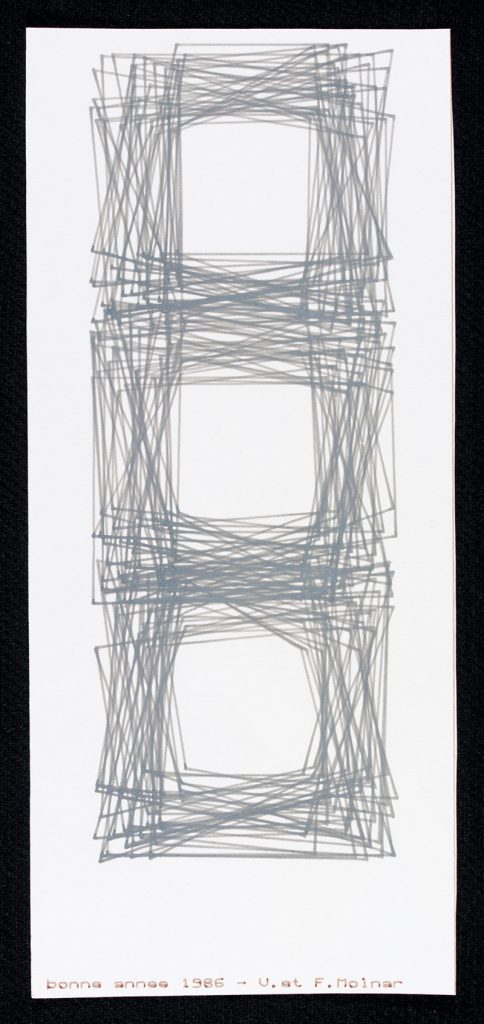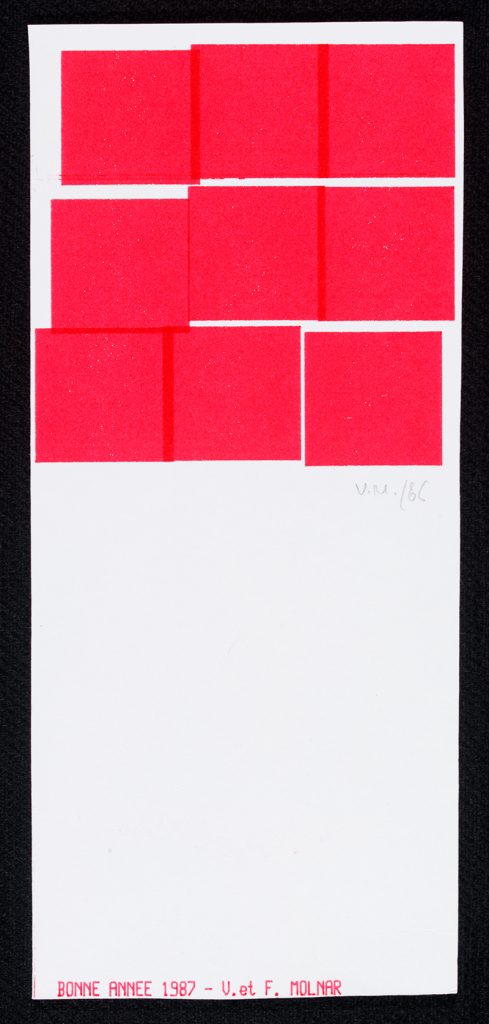We’ve hit mid-December, and the festive season is well and truly underway. It’s the time of year when, even in our digital age, many seasonal cards – from Merry Christmas to Happy Hanukkah, Seasons Greetings, and Happy New Year – are being sent.
The V&A has an impressive claim to at least one of these types of cards: it was the museum’s founding director, Henry Cole, who sent the first Christmas card, as this blog explains. However, there are many seasonal cards in the V&A’s collection, and several of them belong to the digital art collection.
The V&A holds an internationally important collection of digital and computer art. One of the cornerstone acquisitions of this collection was of around 250 works from pioneering academic, curator, and collector Patric Prince. Prince was a supporter of many influential figures in computer and digital art practices and had professional and personal relationships with many of these artists.
I’ve recently been doing research into these artworks, and the Patric Prince archives, and I’ve found that many of the works have personal messages or dedications to Prince. One of the benefits of having many artist friends are the wonderful cards – artworks in their own right – that you receive. I’ve selected a few seasonal cards sent to Prince in the 1980s and 1990s to give a flavour of this wonderful collection.
The artwork on this card Free Form Construction by Iteration was designed by Mihai Nadin (born 1938) in 1966. Like many of those making art using computers in the 1960s, Nadin also had a background in computer science, and was studying at the University of Bucharest at the time of making. At this time, computers were room-sized and prohibitively expensive pieces equipment, that were only available in places like universities or laboratories. Without screen interfaces, code had to be inputted directly before the resulting image was produced – often, as with this image, using a plotter tool. Nadin used IBM machine language, in combination with a random number generator, to give the impression of a freehand doodle.
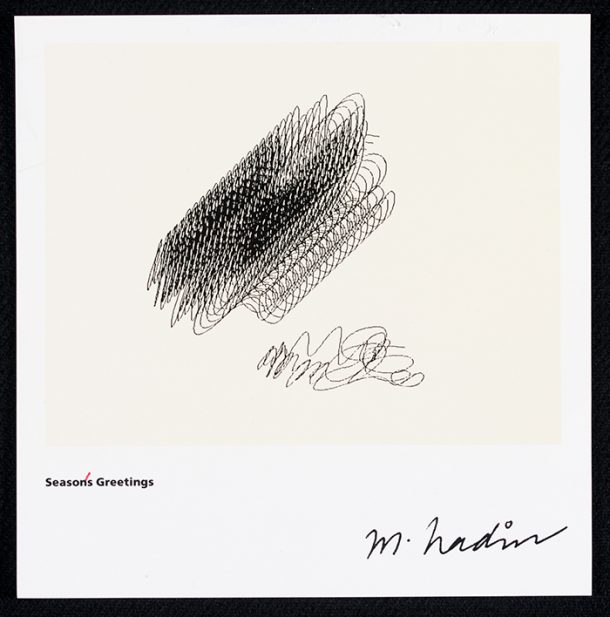
These two ‘Bonne Annee’ (French for ‘Happy New Year’) cards were sent a year apart by the eminent computer artist Vera Molnar (born 1924). The cards are some of the algorithmic works that Molnar was making from the late 1960s onwards. The instructions were coded – with room for variation – into a computer to produce the artworks. Molnar’s exploration of non-representational imagery began in the 1940s and she was therefore unusual among early digital and computer artists in that her interest stemmed from aesthetics and theory rather than the machine. However, the computer allowed her to realise her vision and has been her primary medium to this day.
The note included on the back of the 1986 card gives an indication of the working relationship Prince had with Molnar. The note reads: “Thank you for the invitation; in a few days I will write to you, since I have some questions concerning the art show”. The ‘show’ she refers to is most likely ‘SIGGRAPH 1986: A Retrospective’, an exhibition of computer art curated by Prince, for SIGGRAPH (Special Interest Group on Computer Graphics and Interactive Techniques), which featured five of Molnar’s artworks.
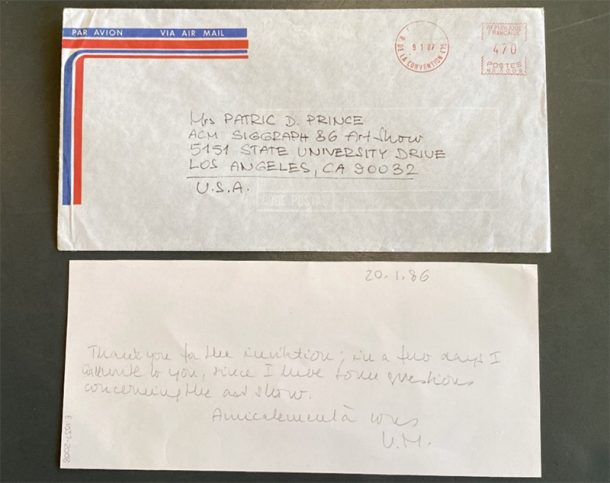
The V&A holds several of Molnar’s works, which are searchable on Explore the Collections.
This joyously colourful card was made by Yoichiro Kawaguchi (born 1952) using computer generated imagery. Kawaguchi attracted acclaim in 1982 when he showed a computer programme he had developed called ‘GROWTH’, which used a new technique of generating animation that gave the impression of depth – previously a manual and labour-intensive process. More research needs to be done on exactly how this specific image was generated, but it shares visual parallels with his generated animations, in terms of colour, form and pixilation of the image.
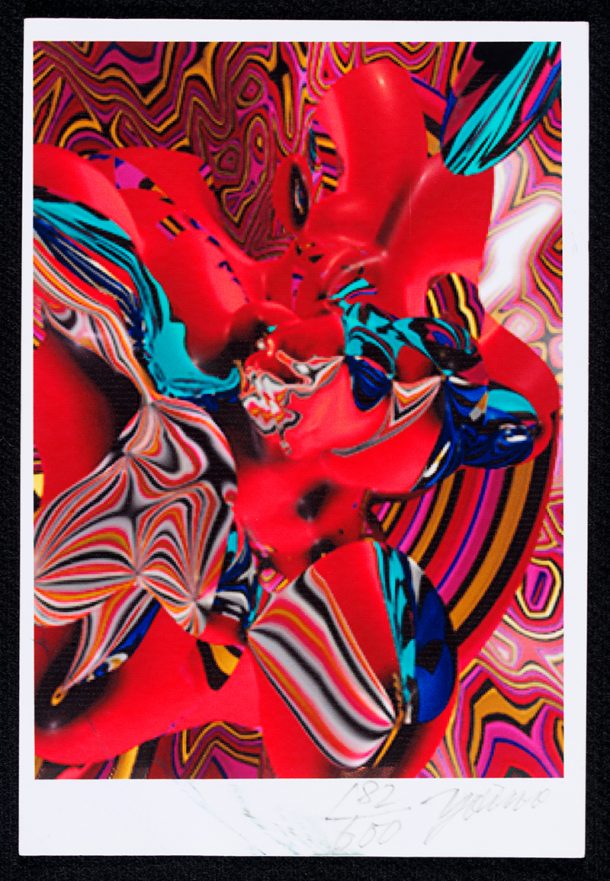
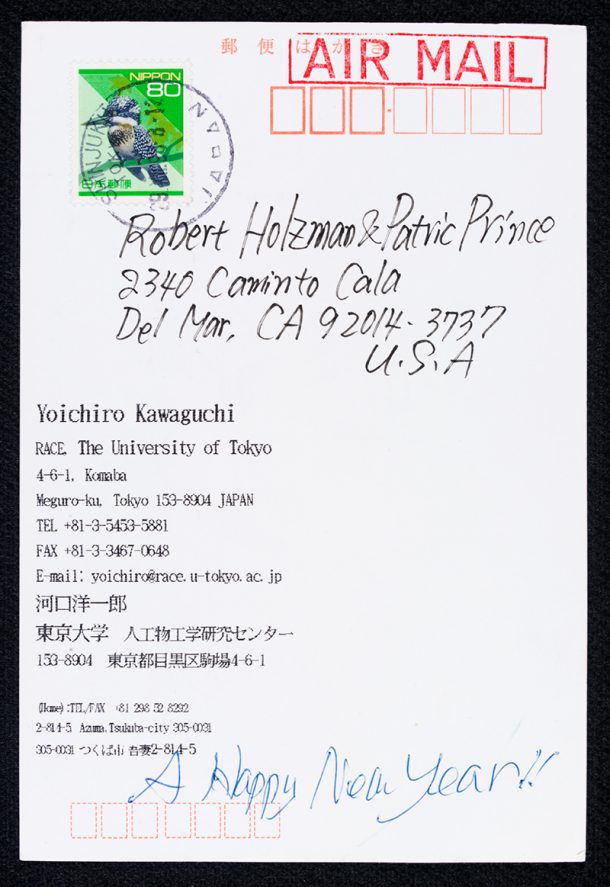
In addition to Prince, the card is also addressed to her husband, Robert Holzman. Holzman was also an interesting figure in the field in his own right, making a select number of computer artworks and working as a scientist at NASA’s Jet Propulsion Laboratory – which hosted artists, such as David Em.
This work, on thick paper and sent protected between sheets with a ‘seasons greeting’ message is arguably more of a seasonal gift than greeting. Sent by John Pearson (born 1940) in 1990, it was one of his later computer-generated works before he returned to the natural world for influence. At the time, he took a rational approach, influenced by Constructivism, using grids and limited colour pallets. Even though he departed from the computer in later works, the sharp lines and reliance of colour to build perspective – and illusion – remains a constant in his work.
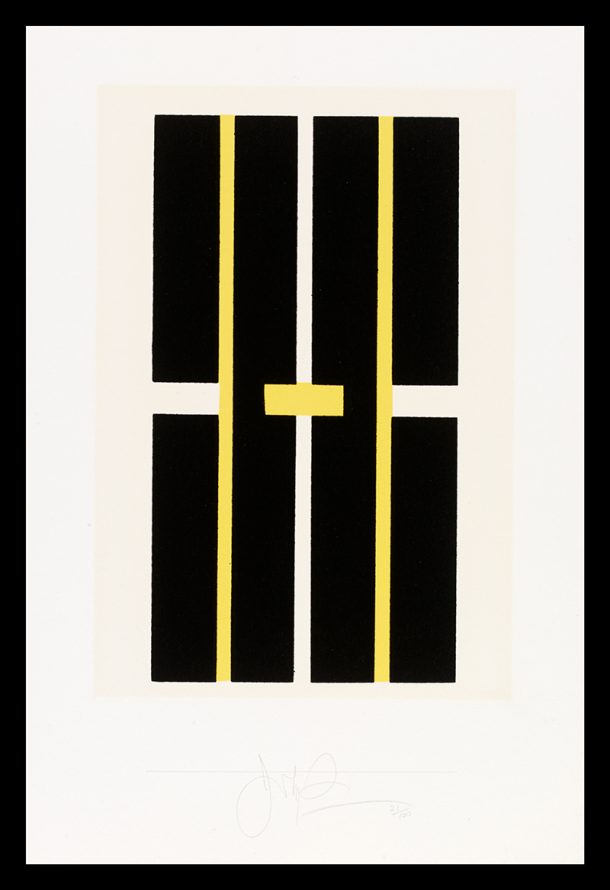
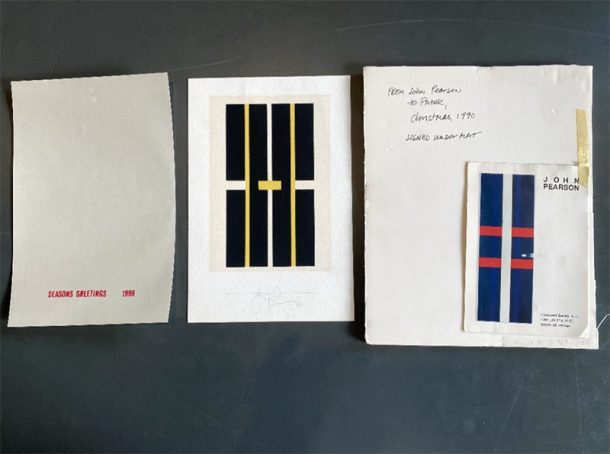
And finally, this card from Kenneth Snelson (1927 – 2016) is approaching something that’s a bit more familiar as a season’s greetings card – a stary sky, red background, and what could almost be a Christmas bauble. In fact, it’s a computer-generated form which is a representation of the molecule Fullerene or C60. First discovered in 1985, it is also called the ‘soccer ball molecule’ or ‘Buckyball’, after architect and theorist Richard Buckminster Fuller. Snelson was also a sculptor and the computer-aided designs he made share a visual language with his sculptural works.
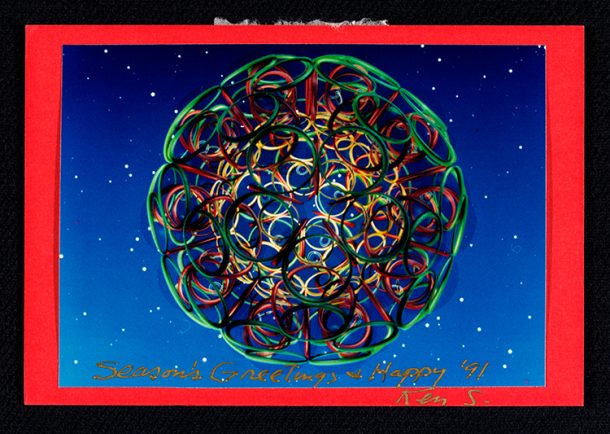
As you may have noticed, these cards are far from the traditional aesthetics of the seasonal card, where snowy landscapes, warmly lit scenes, or at least a bit of glitter typically feature. Somehow, it seems appropriate that an artform that challenged so many preconceptions of what art could be also produced some wonderful, unexpected and unconventional cards.
So, from the V&A’s Digital Art team, Season’s Greetings! Find out more about our Digital Art and Design collections online or visit our South Kensington site, where all the works are available to see through booking in the Prints and Drawings Study Room.
